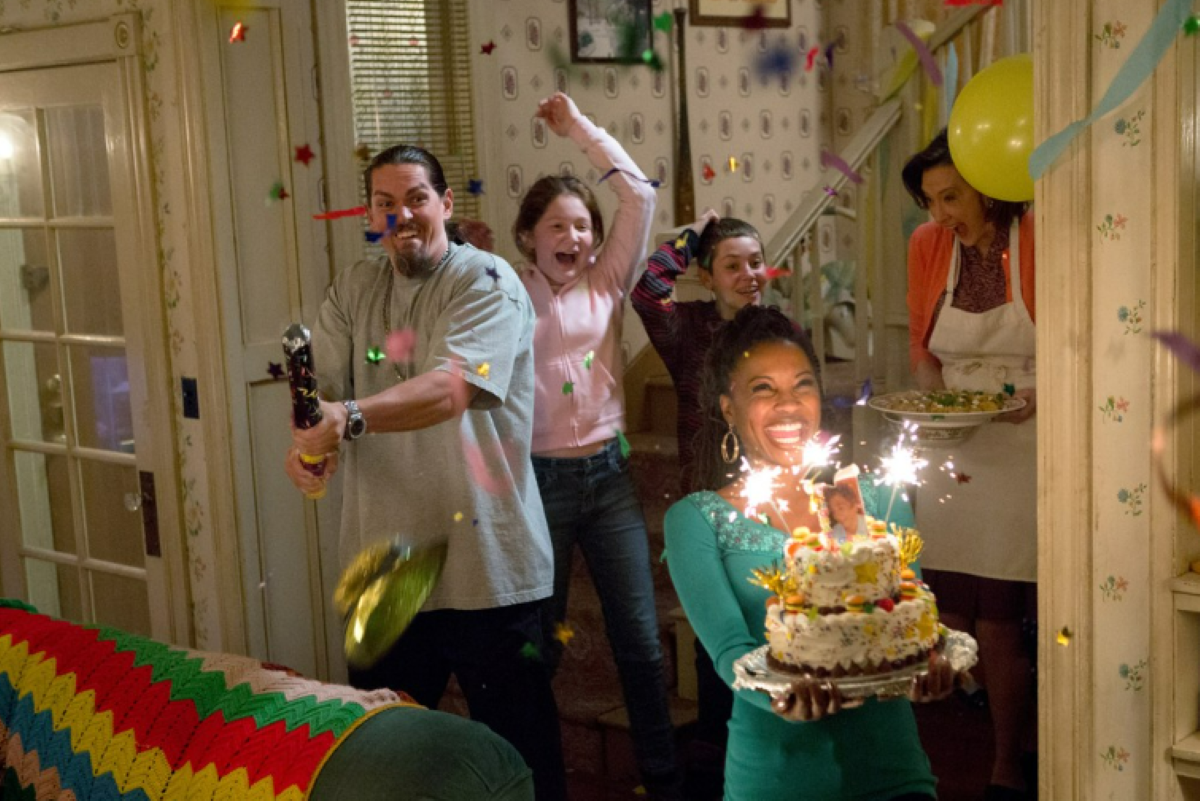Humans are pretty predictable, especially when they’re in love.
When it comes down to it, humans aren’t all that unlike their distant relatives – other species in the animal kingdom – when interacting with the opposite sex.
Though people claim we’re more sophisticated than our hairy friends, psychology professor April Bleske-Rechek said humans mate according to a set of gene-advancement principles. From an evolutionary perspective, these goals are just like those ingrained in animals – designed to ensure each generation continues and is better than the last.
With billions of people in the world, how do two people find each other?
Bleske-Rechek compared finding a mate to finding a perfect slice of pizza. Each restaurant offers a slightly different menu, but you can only go to one restaurant at a time, and even then there are plenty of options once you get there. The restaurant could represent either an entire city or a certain social group.
“Once you’re at the buffet, there are lots of options,” she said, “and some people say that’s just chance – what might be appealing on a given day.”
So how can you know whether pepperoni or triple cheese is the best choice? You can’t.
“Some people have argued there is a total random component, but there’s a lot of systematic variability narrowing our field of eligibility,” Bleske-Rechek said. “There really are millions and millions of possibilities.”
Bleske-Rechek said most people subconsciously look for a mate that is just like themselves – in looks, in intelligence levels, in personality and in opinions. That’s called looking for a mate that’s genetically compatible, someone who’s not genetically similar enough to be related, but close enough to enhance their own best traits should the two of them have children.
According to researchers, the major histocompatibility complex transmits genetic information through smell, usually in saliva.
Whether or not a first kiss has that “spark,” can actually say a lot about a pair’s future.
“That first kiss can actually portray a lot of information about whether you’re genetically compatible or not,” Bleske-Rechek said.
Finding yourself in someone else
Freshmen Krystal Urness and Chris Flores will have been dating for exactly one year and one month on Valentine’s Day. They met when a mutual friend brought Krystal into Coldstone Creamery, where Chris was working.
“I thought he was really nice and funny,” Krystal said. “I like his sense of humor and easygoing personality.”
They looked at each other and Chris put his hand on Krystal’s knee.
“Same.”
It turns out they have quite a bit in common, which they say makes life much easier. They’re both fairly mellow and non-confrontational, and love animals (especially dogs) and music (she plays harp and he the drums).
Bleske-Rechek’s research specialty is in individual genetic differences and evolutionary psychology. One of her recent studies, currently at press, examined the relationships of 48 campus couples that had been together an average of two years. Eleven months later, Bleske-Rechek and a couple of her student assistants brought the couples back, only to find that 46 percent of them were no longer together.
The couples who had since split had also indicated initially they had significantly different religious and/or political beliefs than their significant other. The results suggest conflicting political and religious views can create considerable tension. Bleske-Rechek said the study also supports the idea that while two people are first drawn together by physical compatibility, having a lot in common, especially politically and religiously, will make the relationship last.
Though Chris and Krystal don’t talk about politics often, they voted for the same candidate in the presidential election and also have the same religious beliefs. When the issues do come up, they said agreeing prevents strain on their relationship.
Opposites might attract at first, but most successful long-term relationships, especially marriages, require the two partners to be at least moderately similar just to function smoothly in day-to-day life, Bleske-Rechek said.
“No matter what people say they’re using, they’re using physical appearance as a quick decision maker,” Bleske-Rechek said. “But then after that, you have to get along.”
Sophomore Jeff Jahangir said though he thinks his girlfriend Sara, a junior at the University of Minnesota, is highly attractive, he likes her just because they have so much in common and understand each other. Their personalities, interests and even religious and political beliefs are nearly identical. They’re so much alike, Jeff said they sometimes seem to read each other’s thoughts.
“It’s kind of scary sometimes,” Jeff said about how similar they are. “She thinks I can read her mind but it’s only because that’s what I’m thinking.”
Finding your parents in someone else?
Not only do people look for someone like themselves, they sometimes also pick out a mate who portrays characteristics similar to those of a parent. This usually only happens, though, when there’s a good relationship between that parent and the child, which refutes the theory that individuals end up in a bad relationship because they came from a bad home.
“If you have a parent that has been a good role model of what a good mate is like,” Bleske-Rechek said, “then you would want a mate like that.”
Bleske-Rechek described research studies where a participant would bring in a photo of his or her partner and a photo of their parent at the same age. Without fail, outsiders were able to distinguish in a group of photos of random people which one was a man’s mother just by looking at a photo of his girlfriend.
If you asked Sigmund Freud, he’d likely say that’s because deep down, we’re all sexually attracted to our opposite sex parent. But Bleske-Rechek said evolutionary theories better explain it because of gene compatibility and role modeling. Humans want someone with similar genes to those in their family, but not that similar, because we are naturally programmed to avoid incest. Finding someone with similar, but not exact, genes is the next best thing.
Jeff said Sara doesn’t really remind him of anyone in his family, which he said was a relief more than anything, even though he’s close with his parents.
“I wouldn’t want to date them,” Jeff said.
Though Krystal said Chris shares a few characteristics with her dad, such as his easygoing nature and humor, she said Chris has more in common with her. But Chris said he sees the resemblance between Krystal and his mom.
“You remind me of my mom, kind of,” Chris said. “A lot, actually, now that I think about it. Because you’re just really caring and loving.”
Why women fall for the “bad guy”
When deciding whether to fool around, women are much less risky and more cautious than men are. This is partly because men have higher testosterone levels, which is associated with more aggressive behavior and risk taking.
Women tend to underestimate a man’s commitment to her, while men tend to overestimate a woman’s attraction to him. Much of this is because women have more to lose by miscalculating – single parenthood for one, as well as the subsequent public embarrassment of the telltale baby bump.
But if women are going to go for a one-night stand, Bleske-Rechek said it’ll be with someone who portrays characteristics of having good genes (i.e. good looks) while she’s ovulating. Subconsciously, this ensures that if she does get pregnant, she’ll at least have a beautiful and healthy baby.
“This predicts that women will be more attracted to . the so-called bad guys, the players, when they are ovulating,” Bleske-Rechek said. “There’s a lot, a lot of evidence of this.”
Dating around only encourages a “player,” because research on both humans and animals (fish) has proven that if a woman sees another woman smile at a man, for example, she will deduce that he must be desirable, Bleske-Rechek said. The more people he dates, the more attractive he becomes.
“Men who are sought after as copulation partners actually don’t invest anything in the offspring, they take off,” Bleske-Rechek said. “If they’re high in mate value, then they’re less investing, but they’re likely to give good genes.”
But those men who are more long-term oriented actually experience a drop in testosterone after their first child, which suggests they’ll experience a drop in aggressive behavior and their sex drive, and engage in fewer risky activities that would attract other women.
And for a couple in a stable relationship where the woman knows there is no risk that her partner will leave, her attraction to other men increases significantly while she’s ovulating. However, her attraction to her actual partner never decreases.
But overall, Bleske-Rechek said women and men aren’t so different in their approach.
“Both men and women pursue both types of mating strategies when it suits their purposes,” she said.
Lovesick infatuation, best-friend lovers or soul mates?
Those lovesick couples who can’t get enough of each other in public are probably just infatuated, Bleske-Rechek said. Rutgers University researcher Helen Fisher has actually discovered in MRI scans of the brain that new, infatuated couples have higher levels of oxytocin than long-term pairs. Oxytocin is the same hormone that drives a mother’s strong attachment to her newborn, which explains why both a new boyfriend and a new mom can’t bear to let their girlfriend or child out of sight.
But infatuation can only last so long, Bleske-Rechek said, and the fact that the national divorce rate hovers around four years could be an indicator that not all relationships are meant to last forever.
“We might be evolutionarily programmed to have bonds that are a few years, enough to get together and get a child past that first year of life and then kind of move on,” Bleske-Rechek said. “That happens in a lot of species.”
Because there are so many potential suitors, Bleske-Rechek said it’s almost impossible to believe in soul mates – that there is only one perfect match for everyone.
“It’s almost hard for me to say, because if I lost my husband, I can’t have a more morbid, overwhelming thought of how I would ever make it, how I would ever recover,” she said. “Then reality kicks in and says ‘well you know, people bounce back, they recover, they meet other people with similar interests and who are just as intellectually provocative as the next.'”
If the concept of a soul mate does not exist, it could also explain why widows and widowers are able to remarry.
Krystal and Chris said there are too many people in the world for there to be only one perfect match, though Jeff said soul mates exist, and Sara is his.
“I feel it’s more like there are a lot of people and you just have to find one that works with you,” Krystal said. “A big part of a relationship is to be able to hang out and talk, be best friends.”
Krystal and Jeff said they both have been in past relationships that fell apart because their ex hadn’t been on the same maturity or intelligence level. Most people seek out partners according to their perception of their intelligence and attractiveness, Bleske-Rechek said.
“Not everyone’s attracted to the 10s. If you ask people who they’re attracted to, they adjust for where they think they’re at,” Bleske-Rechek said of physical attraction. “That’s why when you walk down the street and you see a mismatch, you look for an explanation.”
Chris said he sees mismatches in public regularly and usually has to do a double take and look for that explanation.
“I just ask ‘Why?’ Basically, ‘why does that happen?'” he said. “I guess if you don’t know the people and you just see the difference in attraction then I guess it’s just like ‘Well, if they work, that’s fine.’ But it’s still kind of weird.”





